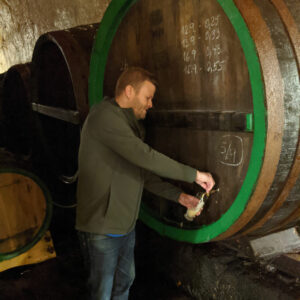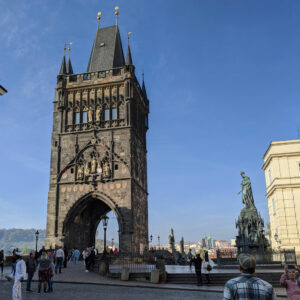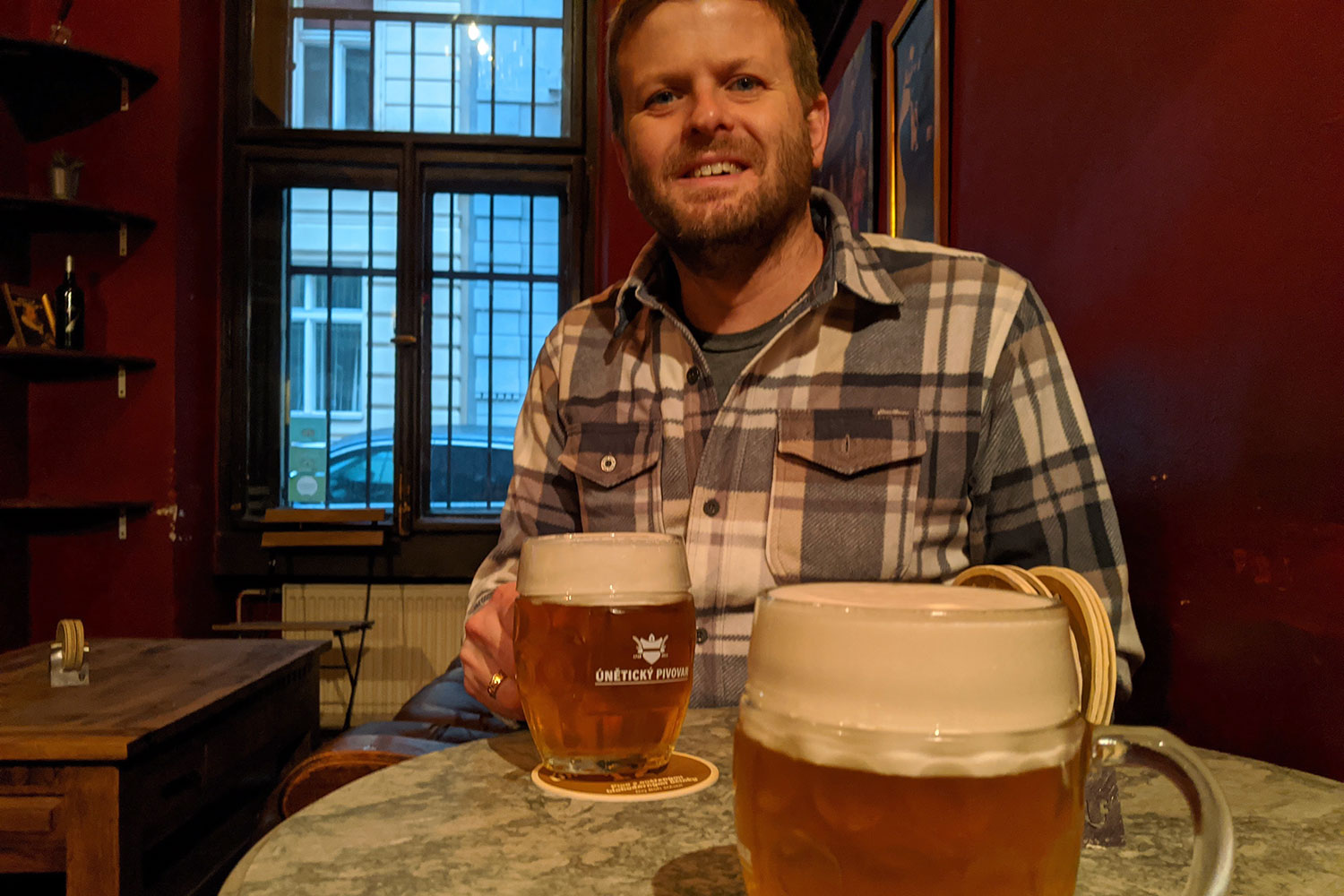Written by Joe Connolly, Sales Director
Anytime I’ve ever experienced a vein of confidence about my knowledge and understanding of beer and its culture, a humbling educational experience has presented itself. So it was when I first agreed to work on a book about lager beer with Jack. As someone who’s been fascinated by beer and books for basically my entire life, the experience seemed too good to be true. So off we started writing and researching lager beer and its famous Bavarian origins.
Except, of course, lager beer as we know it is not strictly Bavarian. The lager beer of our imaginations, that wonderfully pale, dry, and bright beer? It owes just as much to Bohemia as it does to Bavaria. So many fellow lager breweries in the US and beyond take their inspiration not from the traditional pale lagers of Munich, but from the hop-focused Czech beers that stormed onto the world scene in the middle of the 19th century. Just as, in truth, those pale Munich lagers once took inspiration from the incursion of pale lager beer from Bohemia. If we were going to write about modern lager beer, we needed to get better acquainted with the Czech Republic.
Last fall, we headed north out of Munich, through Franconia and on to the famous beer city of Plzen in Western Czechia. Plzen is the home of Pilsner Urquell, the world’s first pilsner and the reason the namesake pilsner lives on everywhere in the world. The ornate gates that welcome visitors to the brewery proudly proclaim the brewery’s founding year of 1842, the year in which a famously surly Bavarian by the name of Josef Groll introduced the world to the pale, bitter, and beautiful Pilsner beer.
 Today in the Czech Republic, Pilsner means only Pilsner Urquell, and locals order it as “PU,” “Prazdroj,” or just by its degrees Plato. The brewery is dedicated only to the production of PU, which is brewed today in a similar fashion as it was over a century and a half ago, albeit with substantially more automation. Triple decoction is still practiced here, and it is noted as key to the flavor profile of PU and all well-renowned Czech pale lagers. They still operate a massive malting operation in which grain is malted into pilsner malt. Today you can visit a portion of the underground cave system that was once home to their massive wooden tank farm. Until fairly recently, PU was still fermented in huge pitch-lined wooden vats. Though this is no longer the case, a cooper’s shop on the premise still raises barrels and makes repairs to existing barrels, some of which are used for tapping at special events.
Today in the Czech Republic, Pilsner means only Pilsner Urquell, and locals order it as “PU,” “Prazdroj,” or just by its degrees Plato. The brewery is dedicated only to the production of PU, which is brewed today in a similar fashion as it was over a century and a half ago, albeit with substantially more automation. Triple decoction is still practiced here, and it is noted as key to the flavor profile of PU and all well-renowned Czech pale lagers. They still operate a massive malting operation in which grain is malted into pilsner malt. Today you can visit a portion of the underground cave system that was once home to their massive wooden tank farm. Until fairly recently, PU was still fermented in huge pitch-lined wooden vats. Though this is no longer the case, a cooper’s shop on the premise still raises barrels and makes repairs to existing barrels, some of which are used for tapping at special events.
If you know a little about Czech beer and how it differs from German lagers, you might know that Czech pale lager is famous for its mild diacetyl character. Diacetyl is a buttery compound that is naturally produced in many lager fermentations, and breweries generally make significant efforts to make sure that it is not detectable in the finished product. Czech beers, including PU, welcome a hint of diacetyl as a natural balance to the huge hop and extract character.
However, diacetyl is not the featured flavor of Czech pale lagers, nor is it always at perceptible levels. It’s one character that makes this style unique, but it is not necessarily a defining feature. If anything, what was such a surprise to my palate was the generous, almost fanatical hop character of many of these beers. Pilsner doesn’t often get credited for it, but historically the style we call pilsner today was one of the preeminent hop-forward styles to emerge on the world beer scene. Many of the best examples we sampled in Pilzen, Prague and beyond were love letters to the mighty Bohemian hop Saaz.
 I realized at some point before heading to Prague that I knew very little about the city, and next to nothing about the culture of beer enjoyed there. On a lark, I took to books and picked up a John Le Carre novel, “A Perfect Spy,” which follows the upbringing and eventual downfall of a spy named Magnus Pym. In the novel, Prague is a shadowy place, full of intrigue and double meaning. A modern eye to Prague reveals a city with generationally complex layers of art, design, and architecture that evoke meaning and feeling beyond simple polarities of good and evil. Soviet-era pragmatism contrasts quite amusingly with art nouveau excess. Of course, beer is everywhere, of really high quality, and is really, really inexpensive.
I realized at some point before heading to Prague that I knew very little about the city, and next to nothing about the culture of beer enjoyed there. On a lark, I took to books and picked up a John Le Carre novel, “A Perfect Spy,” which follows the upbringing and eventual downfall of a spy named Magnus Pym. In the novel, Prague is a shadowy place, full of intrigue and double meaning. A modern eye to Prague reveals a city with generationally complex layers of art, design, and architecture that evoke meaning and feeling beyond simple polarities of good and evil. Soviet-era pragmatism contrasts quite amusingly with art nouveau excess. Of course, beer is everywhere, of really high quality, and is really, really inexpensive.
In little pubs, immigrant restaurants and traditional beer cafes, rounded glasses are filled uniformly with pale lager under two inches of dense foam. The beer slakes thirst fast and invites seconds and thirds a bit too easily. According to many Czech beer folks we talked to, this is what is most important about Czech beer – that it is balanced enough to invite more, and never “empty” in the way they deride the lighter German lagers.
Czechs have a whole vocabulary for the strengths and colors of their beer, down to the amount of foam with which it is served. Local writer (and our guide) Evan Rail pointed out to us that the Czech understanding of beer gets to its agronomic roots in a unique way. Beer is literally grown here, which perhaps made the insular years of Soviet reign perhaps a bit more tolerable. Local beer drinkers know and respect the fact that their beverage began in Moravian barley fields and Bohemian hop farms, and continued to the brewhouse before being cared for and presented by the local tapster. This is a refreshing perspective on something consumers all too often dismiss as a commodity.
 My favorite conversation of the trip happened outside Prague, in the company of Mr. Karel Klusacek at his family’s Kounice malthouse. It is one of the handful of independent Czech floor malting operations in the world, and it is still run by 91-year-old Mr. Klusacek and his son. The business was nationalized during the Soviet era and only returned to the family after the Velvet Revolution of the early 90s.
My favorite conversation of the trip happened outside Prague, in the company of Mr. Karel Klusacek at his family’s Kounice malthouse. It is one of the handful of independent Czech floor malting operations in the world, and it is still run by 91-year-old Mr. Klusacek and his son. The business was nationalized during the Soviet era and only returned to the family after the Velvet Revolution of the early 90s.
Floor malting is expensive, time-consuming, and decidedly old-school. Huge rooms are dedicated to shallow piles of drying malt that must be raked at regular intervals. At the end of the complicated process, the malt is sold at premium prices, and the Kounice Malthouse is only accepting waitlists for future customers. Their deceptively simple product – floor malted Czech malt – gives the soul to the deceptively simple Czech pale lager. At their in-house pilot brewery, they show the malt off in simply made, beautiful golden lagers. Listening to Mr. Klusacek share his story over a plastic liter bottle of lager summed it up for me.
Czech lager is a story of farmers, growers, brewers, and tapsters. It’s at once immediate and inviting, but also characterful, distinct, and idiosyncratic. It’s a reflection of the personality and the passion of the Czech people, an embodiment of their spirit. And while it shares its culture and naming conventions with the world, there is not much else in the world quite like it. Dej Bůh štěstí!








